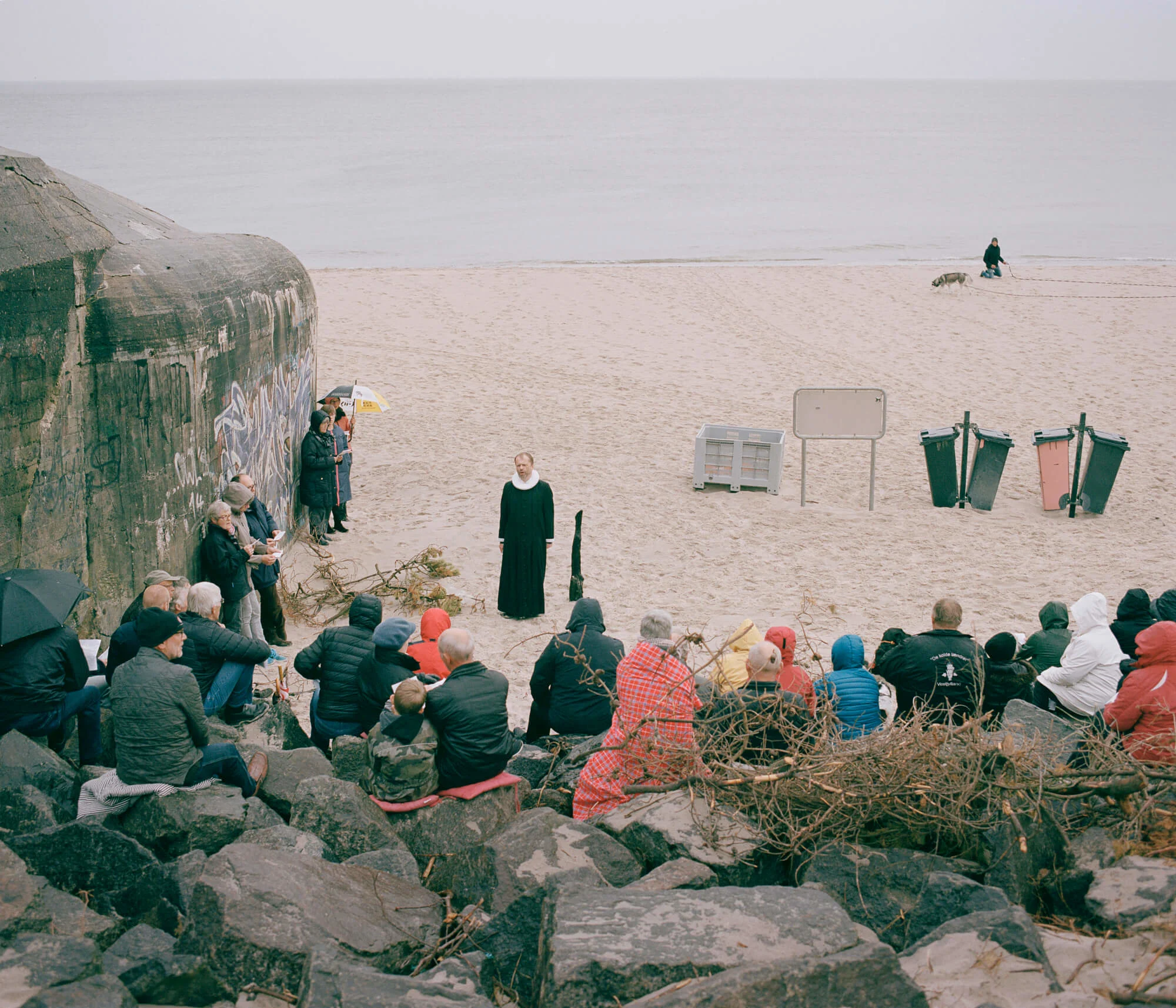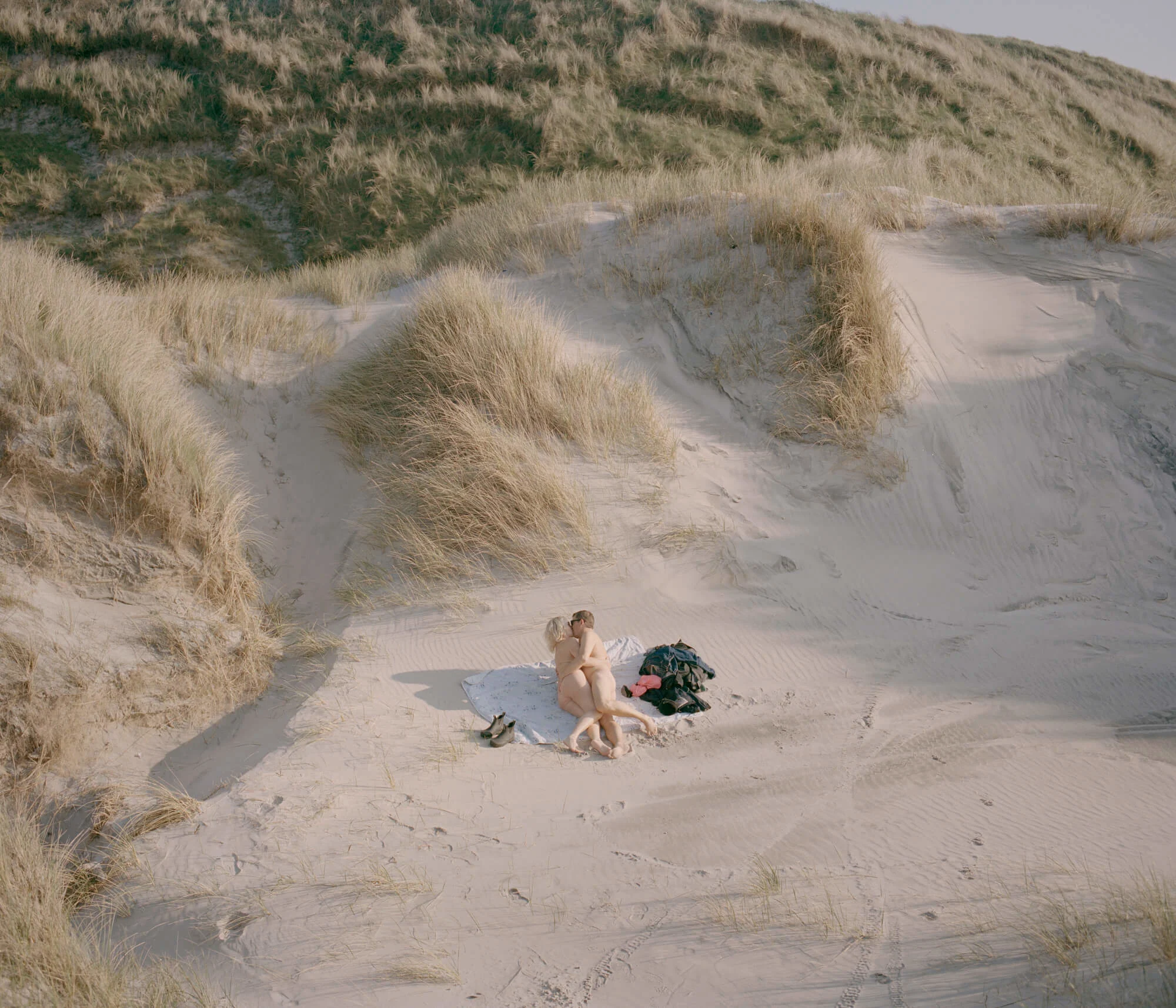
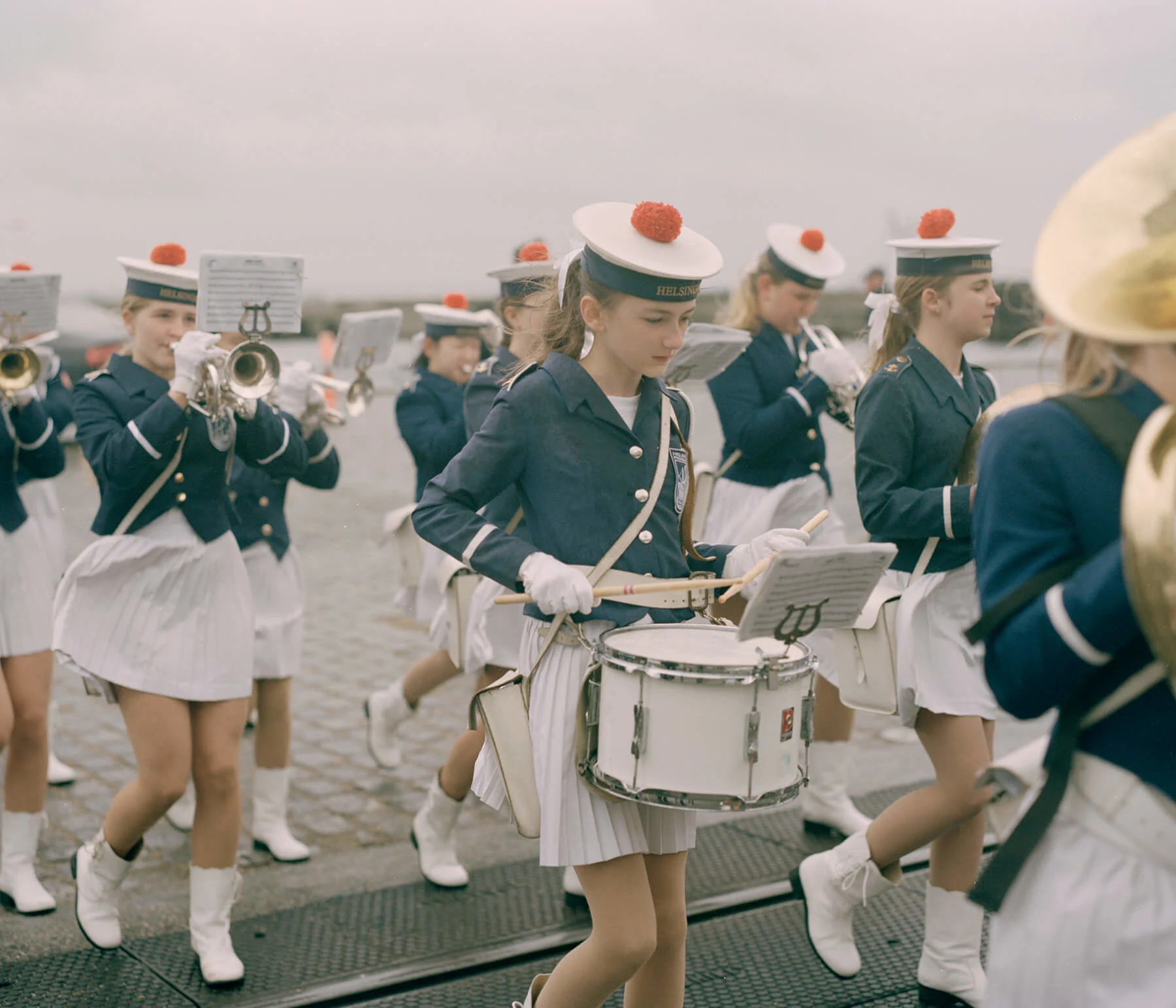
In Denmark, you're never more than about 30 minutes from the coast. So naturally Danish photographers Mathias Svold and Ulrik Hasemann grew up going to the beach. Many of their childhood memories play out there; fishing for crabs in summertime or cavorting on the ice in winter. It’s the ever-changing subject in their collaborative photo project Coastland.
“Some days the ocean can be quiet and peaceful, other days it can be rough and wild,” Mathias says. “Somehow the coast is always the same and never alike.”
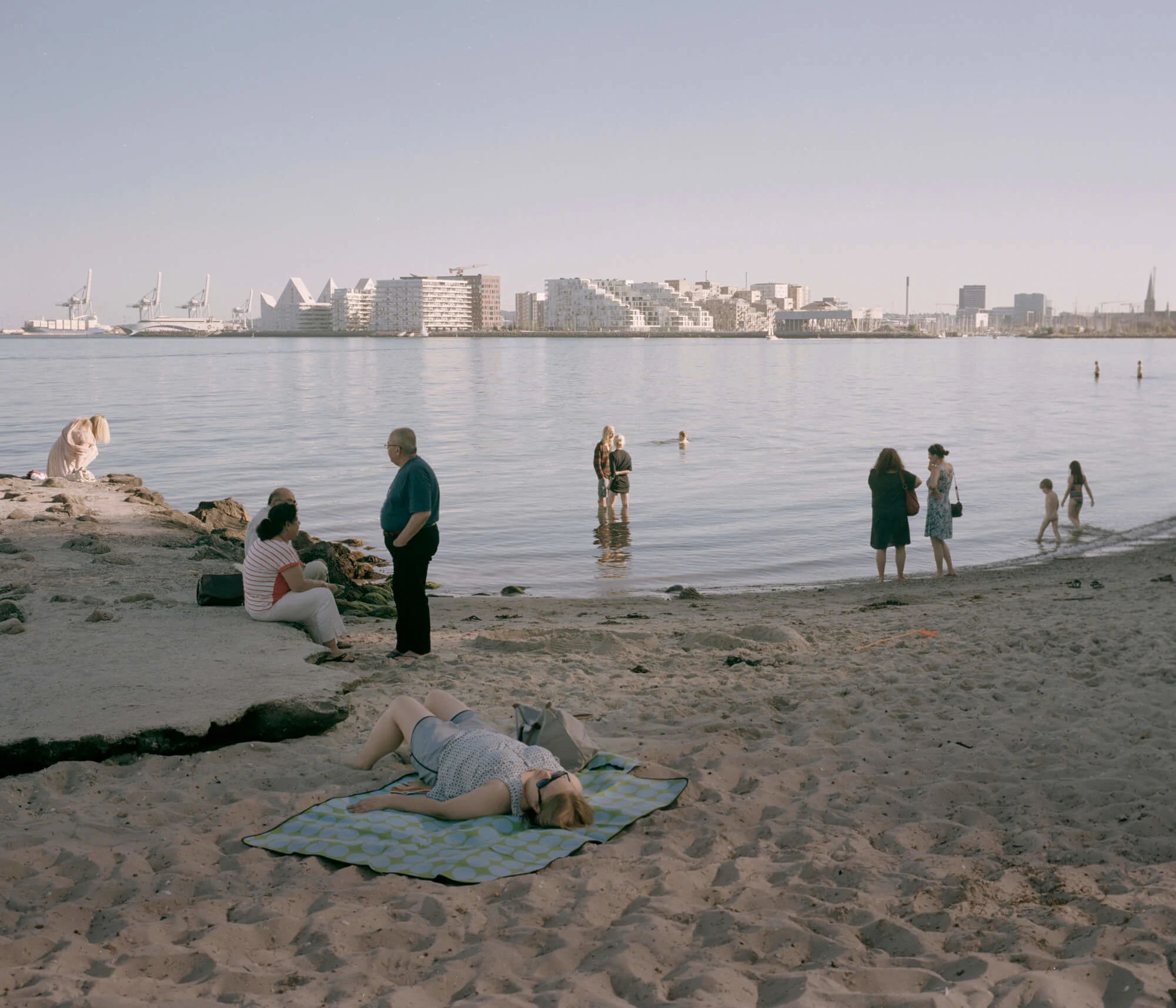
In recent years there’s been political debate in Denmark about whether to protect the coast or to develop it for tourism. The coastline Mathias and Ulrik capture is in flux, influenced and shaped by people but also by erosion and climate change, like rising sea levels eating up the land.
“We believe it is important to take a step back and investigate what makes the Danish coast unique in the first place,” Mathias says. So for Coastland, they traveled across the country to capture the varied ways Danish people interact with the sea and the shore. “It’s been a great opportunity for us to explore our own country,” he says.
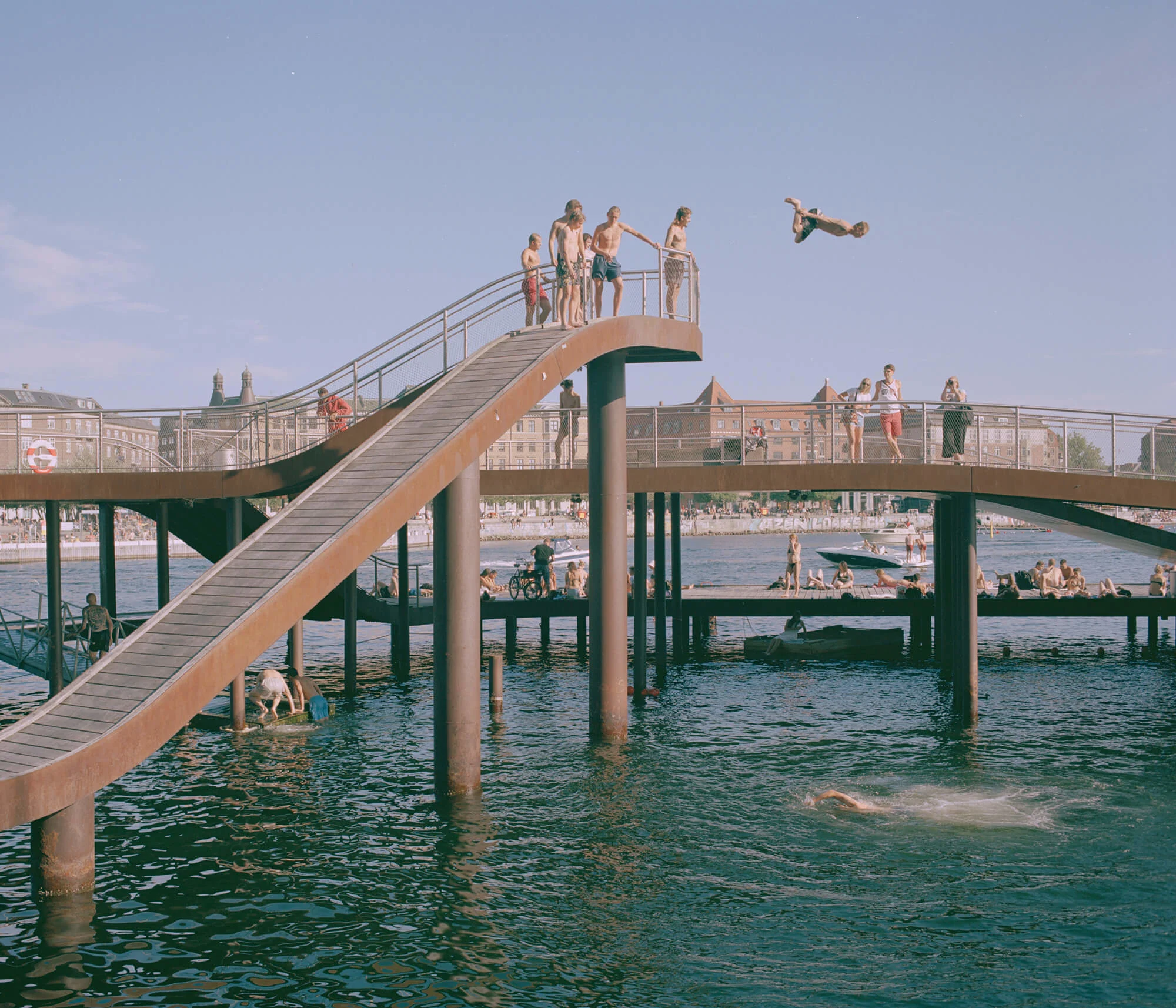
The coast changes dramatically in different parts of Denmark, from chalk cliffs on the south-eastern island of Møn, to Bornholm’s beaches of sand so fine it’s been used for hourglasses, to Råbjerg Mile, a giant sand dune that migrates 15 meters every year in the northernmost part of the country.
“We both live within a kilometer of the coast so it’s easy for us to just take the camera along on an evening walk. Or when visiting family at the other end of the country,” Ulrik adds. “Also Denmark is a small country, even though we have a long coastline, so it’s possible to get to any part of the country within a day.”
But still, with 8750 kilometer of coastline stretched out before them, working as a team became a huge advantage.
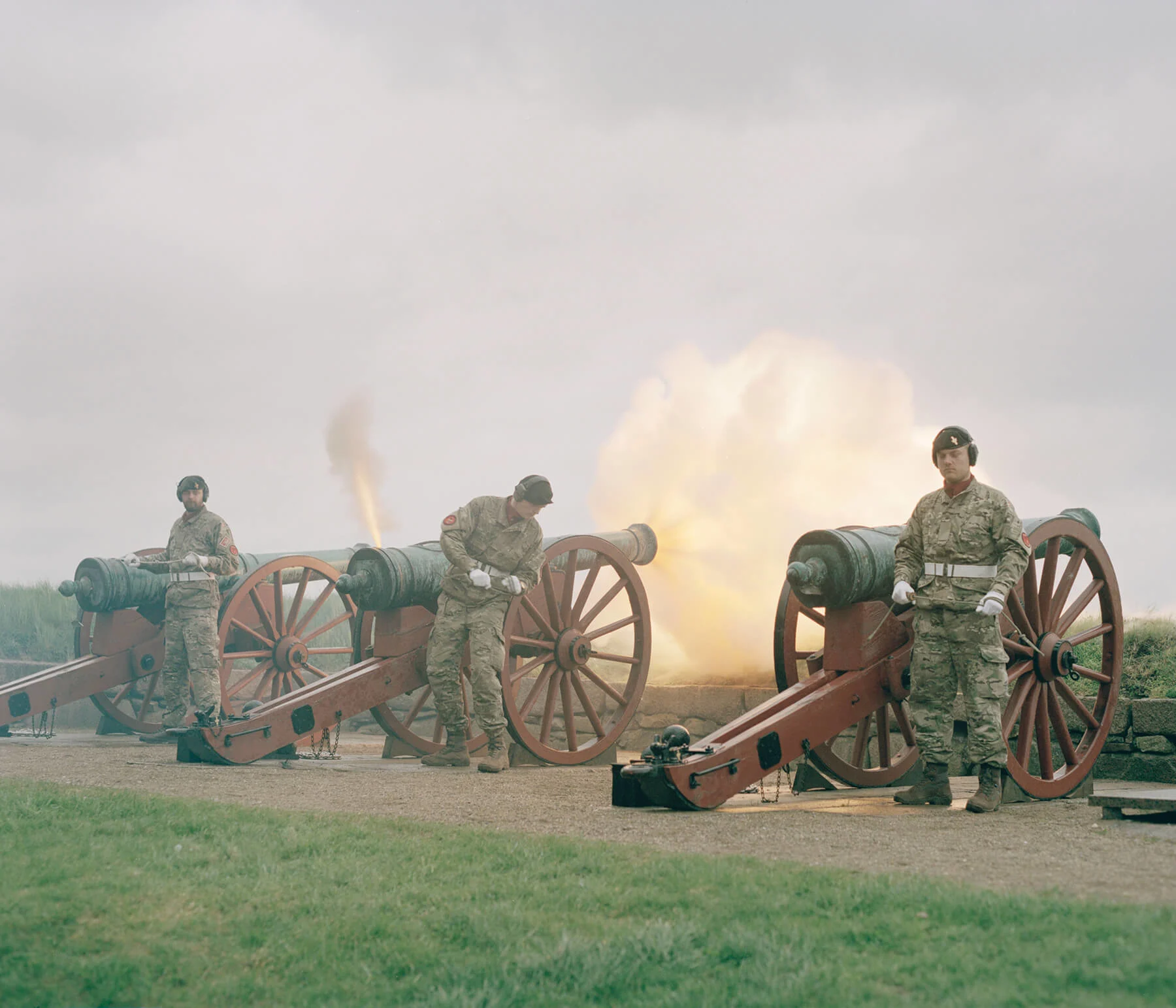
We do not always agree but we use that to challenge each other’s perspective.
Mathias and Ulrik met in the same class at the Danish School of Media and Journalism studying photojournalism. In their final year they started to collaborate. As a duo they could do double the research and bounce ideas off each other to make them better.
Now, for each project, they put their heads together for every stage of production – from developing an idea to shooting it to photo editing.
“Making large projects consists of a thousand big and small decisions at every stage,” Mathias says. “The key strength in our cooperation is that we can discuss every one of those choices. As two individuals we do not always agree and we see things differently but we use that to challenge each other’s perspective. It qualifies our choices making each of us a better photographer when we work together.”
Shot in grainy black and white, their series Stuck At Belgrade Station gives a haunting and gritty view of the lives of refugees. The images present mostly boys and young men from Afghanistan and Pakistan, who sleep in abandoned warehouses, train wagons and shacks behind the central train station in Serbia’s capital city.

For their project The Wild Within, they journeyed into Denmark’s biggest forest to explore the industrial and spiritual value of nature. They returned with images like visions from a dark fairytale.
In contrast, thanks to the occasional misty shoreline and shooting on Kodak Portra film , there’s very gentle saturation in the Coastland images.
Their style shape-shifts for each series but within the series it stays singular. “Before we start a common project we discuss a lot: the story but also the visual style and way of shooting,” Ulrik says.
As a result their images are so close in nature it’s impossible to tell who shot which. “Sometimes we don’t even know ourselves who shot the image,” Ulrik says, “and it’s not important to us, we are only interested in the final result.”
For Coastland, they made a scrapbook with a visual direction to remind them of the style. Once they started taking photos, they used their own images as a guide for the rest. “We look at the body of work together as it is growing and discuss what works,” Ulrik says.
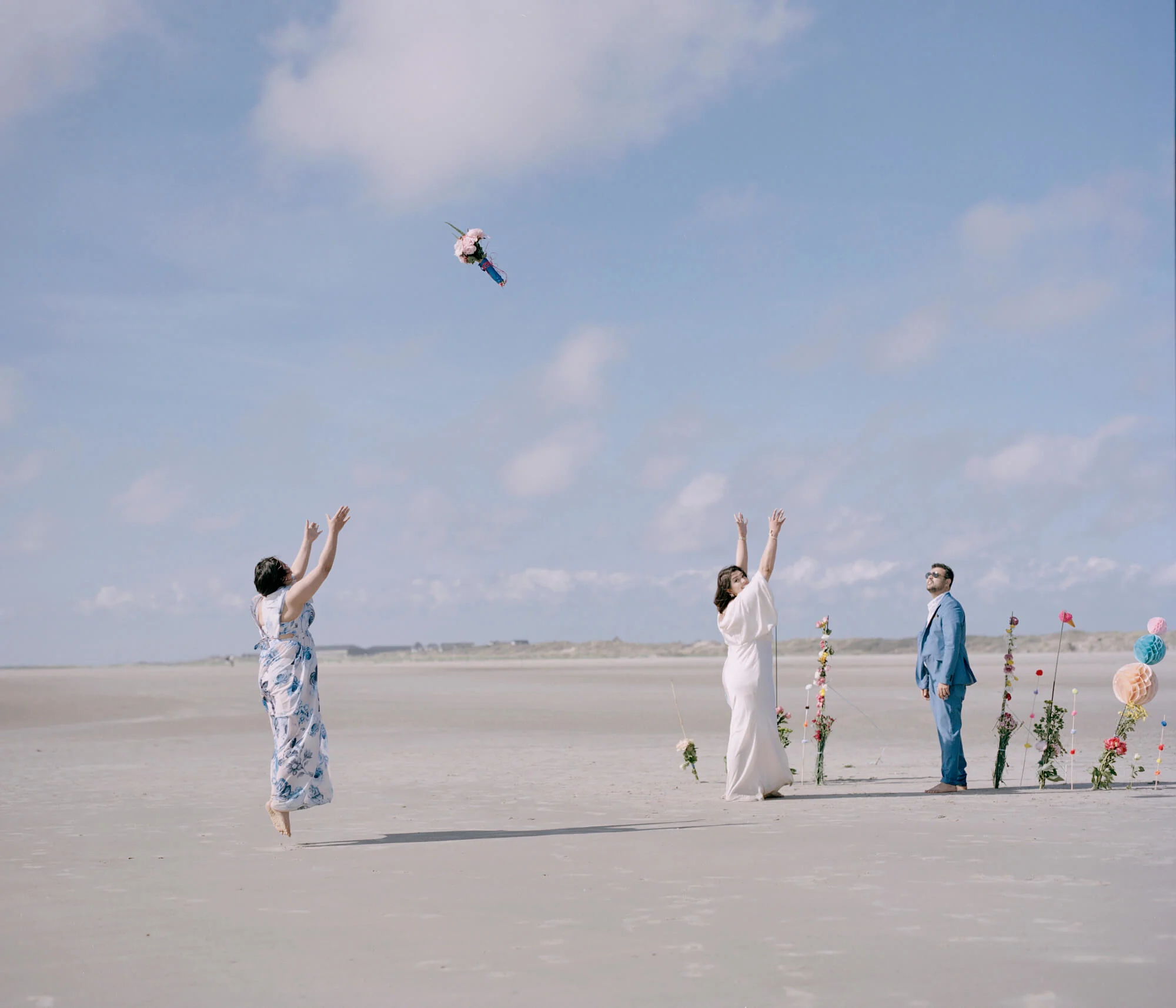

The stories within the photos are important to us.
For a project like this that spans geographical locations, time, subject, and season, where one photo captures a bride throwing her bouquet on a pristine white beach and another the grimy inners of a ship scrapyard, a definitive look helps to present the work as a story.
“The stories within the photos are important to us,” Ulrik says. “In some of them it’s the story of the landscape that’s important. In many of the photos it’s the story of the people that’s important.”
Sometimes they make an appointment weeks in advance to photograph people, other times they just happen upon their subject on the beach.
In one image a posse of older bathers dry off after a swim, nude save for aqua socks and matching orange swimming caps. In another a team of young football players celebrate in the shallows fully clothed after winning a match against the local team.
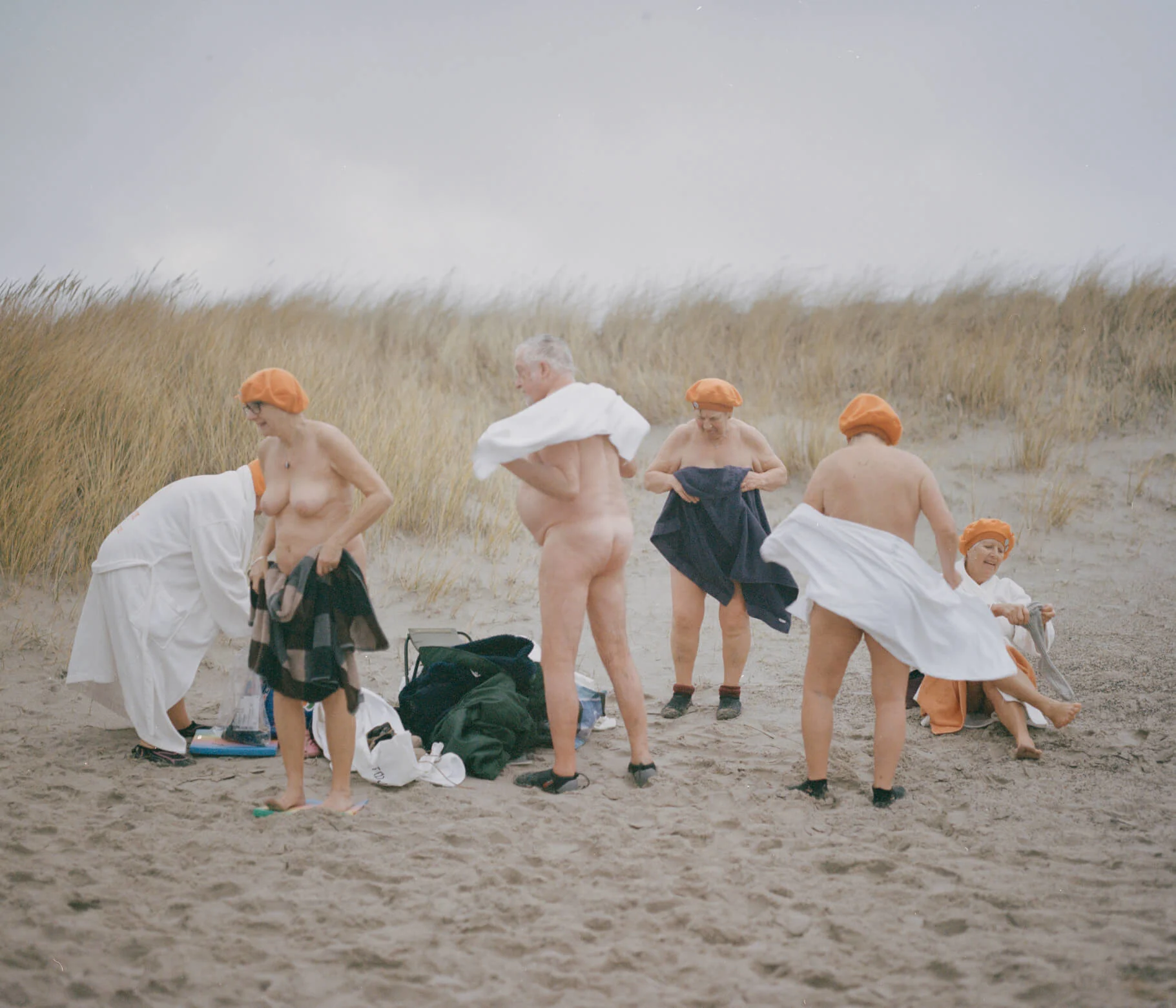
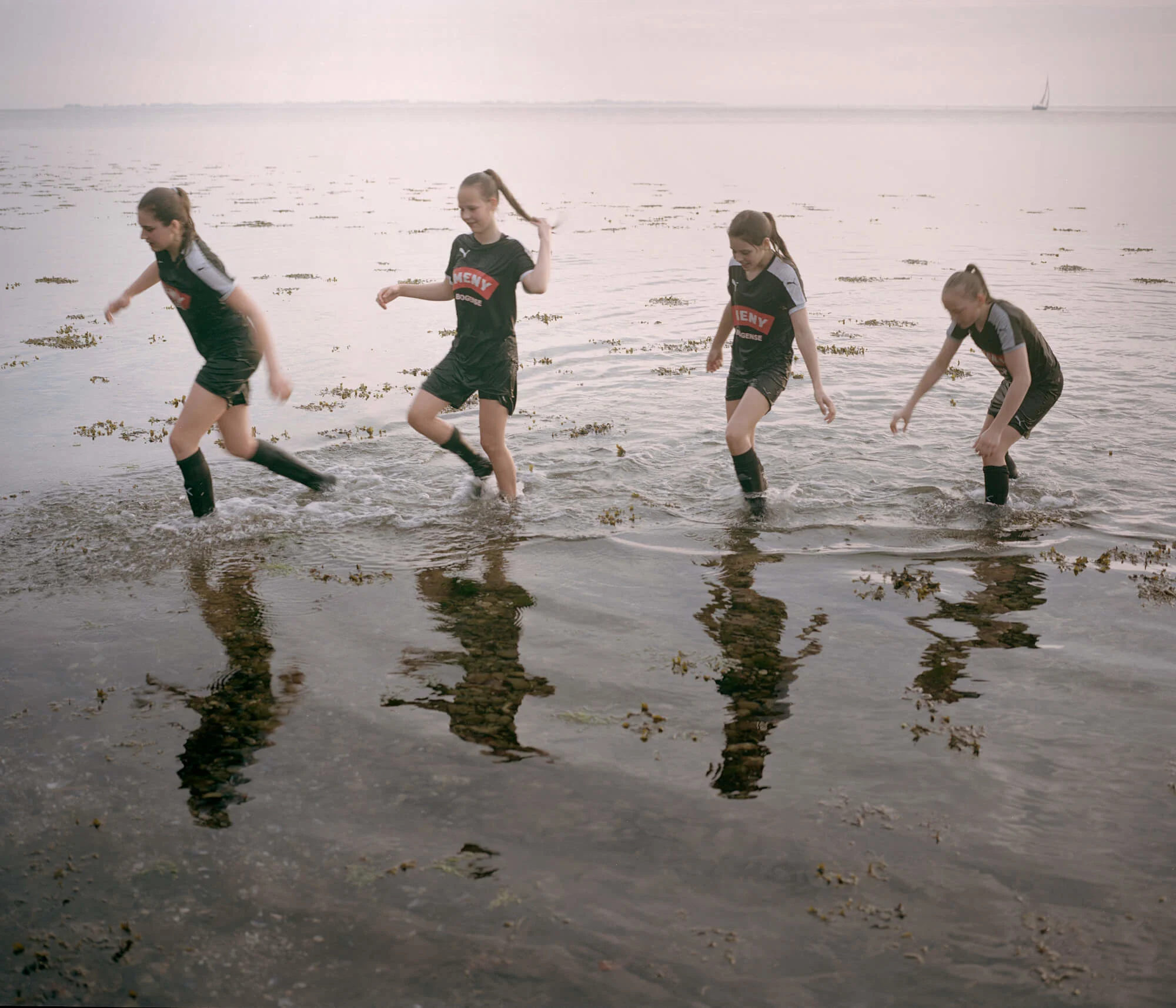
They pictured Ole Lange in his heavy black cassock preaching one of his regular sermons to a ragtag congregation. “If Jesus could preach by the sea, so can I,” he said to Mathias and Ulrik. “The meeting with the ocean is always the same and always something new. It is infinite and greater than ourselves. Like God.”
The two photographers even stumbled upon a naked couple intertwined on a picnic blanket sheltered from windswept dunes, who told them, “it’s actually incredible, there are so many places in small Denmark where you can have sex in nature undisturbed.”
Every image tells its own story, but the photographers’ style and the beautiful Danish coast make the series a consistent whole.
Words by Alix-Rose Cowie.
